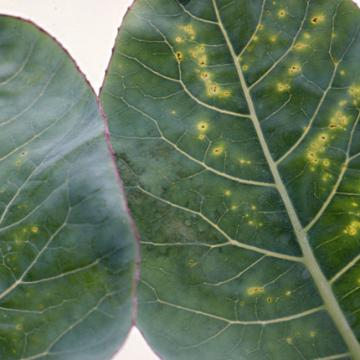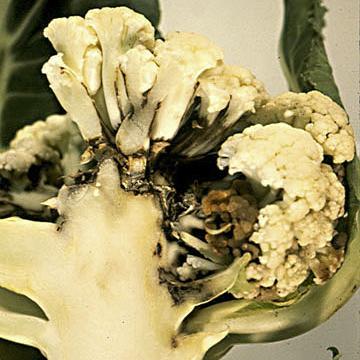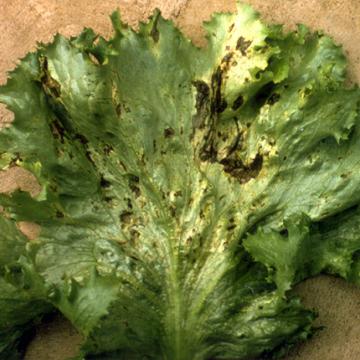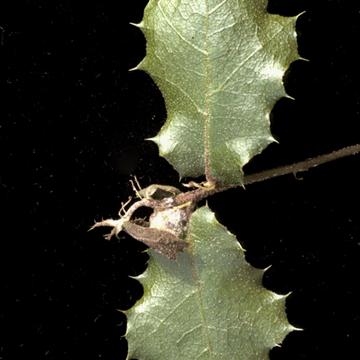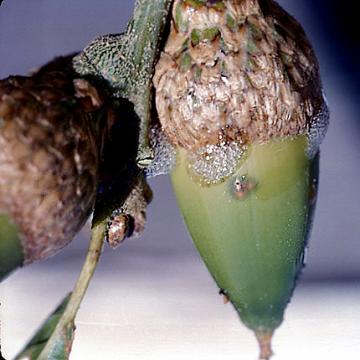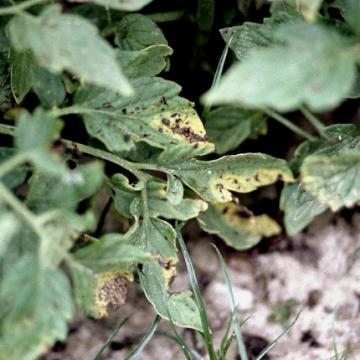DISEASE: Bacterial leaf spot (Head rot)
HOST: Cauliflower
Leaves with tiny lesions surrounded by large halos.
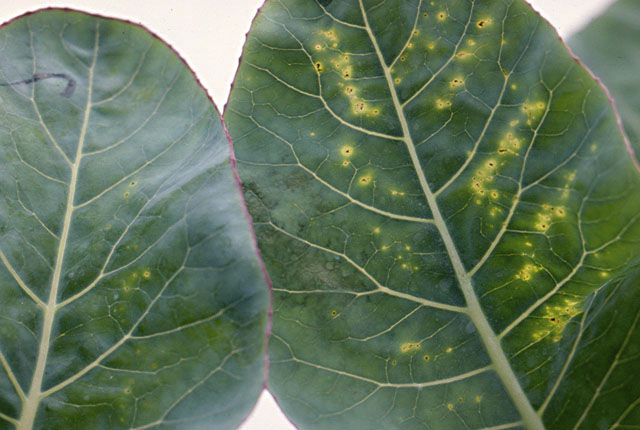
Bacterial leaf spot (Head rot) | Cauliflower
DISEASE: Bacterial leaf spot (Head rot)
HOST: Cauliflower (Brassica oleracea var. botrytis)
PATHOGEN: Pseudomonas syringae pv. maculicola
SOURCE: R. Campbell
DISEASE: Bacterial leaf spot (Head rot)
HOST: Cauliflower
Section of a cauliflower head with discolored, infected tissues.
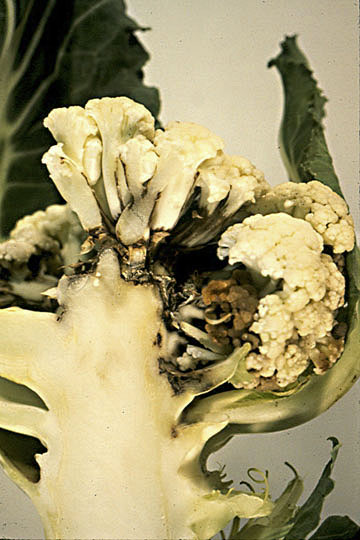
Bacterial leaf spot (Head rot) | Cauliflower
DISEASE: Bacterial leaf spot (Head rot)
HOST: Cauliflower (Brassica oleracea var. botrytis)
PATHOGEN: Pseudomonas syringae pv. maculicola
SOURCE: R. Campbell
DISEASE: Bacterial leaf spot (Head rot)
HOST: Lettuce
Leaf with black, greasy spots that tend to be vein delimited. Lesions begin as small, angular, water-soaked lesions that coalesce, resulting in large necrotic areas.
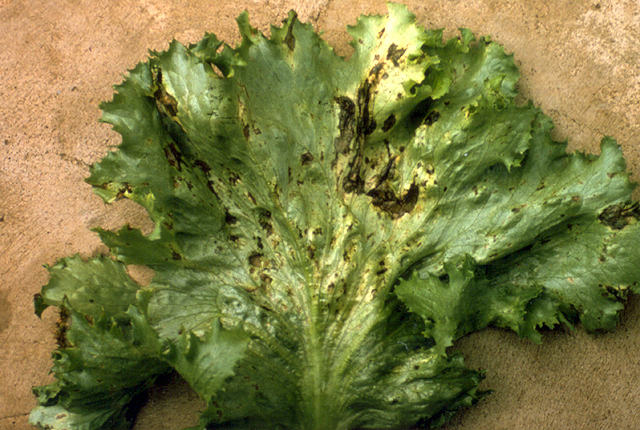
Bacterial leaf spot (Head rot) | Lettuce
DISEASE: Bacterial leaf spot (Head rot)
HOST: Lettuce (Lactuca sativa)
PATHOGEN: Xanthomonas axonopodis pv. vitians
PATHOGEN SYNONYM: Xanthomonas campestris pv. vitians
SOURCE: A. Alvarez
DISEASE: Drippy nut disease
HOST: Oak
Ooze from young twig inoculated with Brenneria quercina.
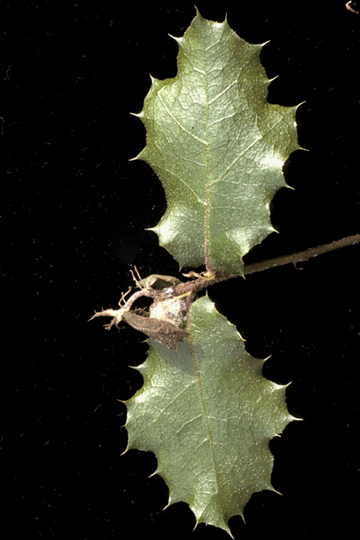
Drippy nut disease | Oak
DISEASE: Drippy nut disease
HOST: Oak (Quercus agrifolia)
PATHOGEN: Brenneria quercina
PATHOGEN SYNONYM: Erwinia quercina
SOURCE: M. Schroth
DISEASE: Drippy nut disease
HOST: Oak
Ooze from infected acorn. Copious ooze drips from infected acorns, leaving sticky spots on objects under tree canopy. Infections are associated with insect oviposit wounds.
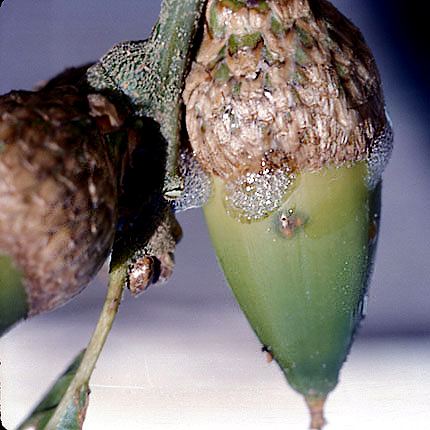
Drippy nut disease | Oak
DISEASE: Drippy nut disease
HOST: Oak (Quercus agrifolia)
PATHOGEN: Brenneria quercina
PATHOGEN SYNONYM: Erwinia quercina
SOURCE: M. Schroth
DISEASE: Syringae leaf spot
HOST: Tomato
Leaves with brown necrotic lesions and chlorotic margins. Symptoms vary greatly among cultivars. Some have black or brown lesions with bright yellow, chlorotic areas and others do not have yellowing.

Syringae leaf spot | Tomato
DISEASE: Syringae leaf spot
HOST: Tomato (Lycopersicon esculentum)
PATHOGEN: Pseudomonas syringae pv. syringae
SOURCE: R. Gitaitis


